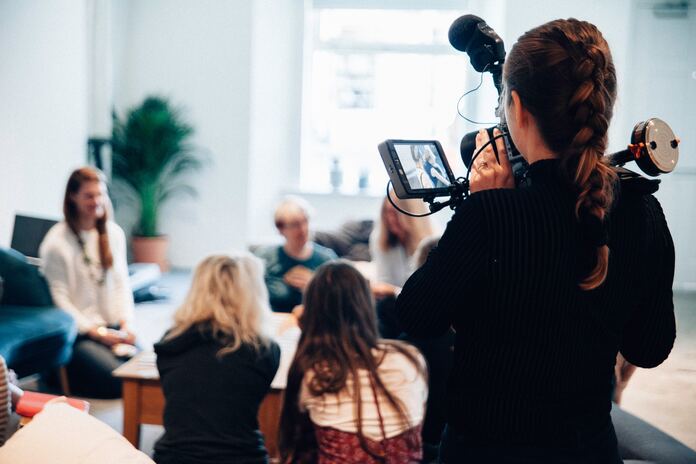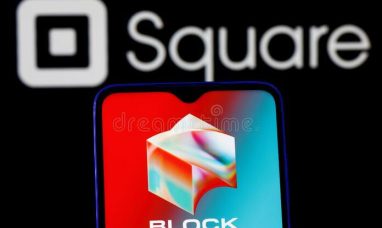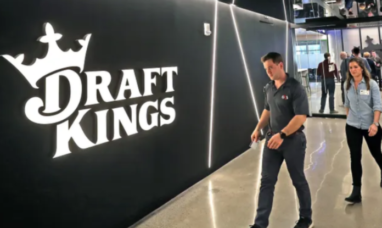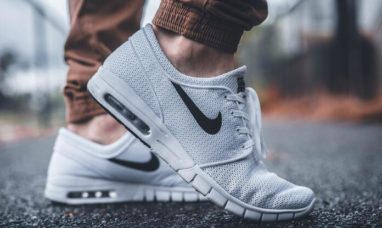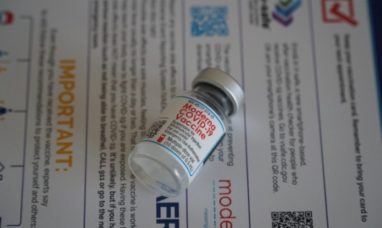David Rawlinson, the CEO of Qurate Retail (NASDAQ:QRTEA), seems sure that the business will be around in two years. The market is unconvinced. The company’s stock price has dropped 66% in the past two months alone, and on March 17 it dropped below the $1 minimum trading price set by the NASDAQ. Bonds issued by the corporation are currently trading at distressed levels. All market indicators point to QRTEA’s impending bankruptcy, but I believe the company will likely survive—at least for the foreseeable future. In this piece, I go over possible bankruptcy catalysts over a range of time frames and talk about their likelihood.
I’ll make two assumptions in all cases. The first is that QRTEA won’t be able to obtain further money, neither through dilution of its shareholder base nor by issuing new loans. Second, I’m making the assumption that management won’t voluntarily declare bankruptcy until the business is unable to pay its debts with cash on hand. Both are feasible, but my attention will be drawn to QRTEA’s operational efficiency in light of its debt load. I’m also presuming that the reader is somewhat familiar with QRTEA because I recently authored another post that covers the firm in greater detail.
Will Qurate Retail Fail in the Next Ninety Days?
Starting in 2023, QRTEA had $2.15 billion in credit facility borrowing capacity and $1.2 billion in cash on hand. Although the credit facility has restrictions, it can be utilized to cover working capital requirements and settle other obligations. The remaining $214 million of the 4.375% Senior notes due in 2023 must be paid off, and QRTEA must also manage their operating capital, during the next ninety days. Due to the timing of payments accumulated in Q4 of last year, management noted that they anticipate a working capital tailwind of around $150 million in Q1 (source). This should result in positive free cash flow in the first quarter and at least flat free cash flow in the second. Net cash going out the door for operating needs and debt repayments only amounts to $414mm even when considering Q1 2022 free cash flow of -$200mm. I would rank the likelihood of bankruptcy in this timeframe as extremely low because cash on hand can more than satisfy cash needs during the ensuing 90 days.
End-of-period liquidity (worst case): $2.9 billion (cash flow down $414 million)
Will Qurate Retail File for Bankruptcy by 2023’s End?
There are no additional note payments due in the second half of 2023 after QRTEA settles the outstanding 4.375% Senior notes balance in H1. There is an incentive to keep leverage ratios as low as possible, so management may decide to pay off the 4.85% notes earlier than they are due in 2024, but it is not necessary.
For the remainder of 2023, there are two additional elements to take into account. The first is the $1.1 billion in senior exchangeable debentures issued by QRTEA. Three tracts of senior debentures are held by QRTEA subsidiary Liberty Interactive LLC as a result of prior spin-offs and subsequent acquisition transactions with other Liberty companies:
The holders of the 4% and 3.75% debentures may, at their option, exchange them for fractional shares of T-Mobile (NASDAQ:TMUS) and Lumen (NYSE:LUMN), respectively, while the holders of the 1.75% debentures may exchange them for Charter Communications (NASDAQ:CHTR) shares:
The potential monetary liability to QRTEA fluctuates over time along with the share prices of CHTR, TMUS, and LUMN. Because of recent declines in LUMN’s share price, the cash cost of an exchange of the 3.75% and 4% debentures, for instance, is only $213 million and $176 million, respectively.
The 1.75% debentures, which have the option to convert their debt into CHTR shares starting this year, will be the most important of the three in 2023. Given that CHTR shares are currently trading at a favorable exchange price and that 1.75% is an unfavorable interest rate (for investors) in the current economic climate, I believe it is likely that QRTEA will receive a significant number of exchange requests this year and may ultimately need to pay out the entire $330mm principal balance. According to an indemnification arrangement with Liberty Broadband Corporation, QRTEA is shielded from paying more than the principal amount.
Free cash flow is another important issue to take into account. A turnaround strategy being carried out by management, known as Project Athens, is expected to increase free cash flow creation in the second half of 2023 and more completely in 2024 and beyond. The strategy calls for cost-cutting actions and a shift in attention back to the company’s core clientele. When fully executed, according to Rawlinson, the plan should produce an additional $300 million to $600 million in yearly cash flow.
The possibility of an economic slump might tip the scale in the opposite direction. Although macroeconomics is not my area of expertise, it’s not hard to discover articles and viewpoints that predict that a recession will start sometime in 2023. The performance and cash flow of QRTEA would be negatively impacted by a downturn in consumer spending, albeit the extent of the effect would depend on how severe the recession was. In H2 2023, I could see a recession canceling out Project Athens’ advantages and resulting in break-even operating cash flow. We have a negative cash flow of $330 million in H2 if we assume the entire $330 million of 1.75% debentures is called, but cash and the credit facility can still cover it. I believe there is extremely little chance that QRTEA will fail in 2023.
End-of-period liquidity (worst case): $2.57 billion (cash flow of -$330 million)
Will Qurate Retail File for Bankruptcy by the 2026’s End?
For a total debt repayment of $1.2 billion, QRTEA has senior notes due in the amount of $600 million in 2024 and 2025. As long as the company can avoid spending $1.3 billion in cash over the course of those two years, I would anticipate that it would be able to survive, with over $2.5 billion of liquidity likely still available at the end of 2023. The debts under the credit facility will become due in October 2026, which is when I believe the first significant bankruptcy catalyst will occur. The ability of QRTEA to make this repayment will depend on how much free cash flow it generates in 2024 and 2025. For instance, if the company does not create any free cash flow during that time and the worst-case scenario for 2023 unfolds, QRTEA will be left with an unbridgeable $1.8 billion liquidity gap and will most likely file for bankruptcy. In the event that Project Athens is a resounding success and QRTEA returns to an average annual free cash flow of $650 million beginning in 2024, they would be able to pay the credit facility loan repayments (barely). Of course, if QRTEA is once again producing that kind of free cash flow, it will likely be able to extend or renegotiate the credit facility and won’t initially be experiencing a liquidity problem.
worst case end-of-period liquidity: -$1.8b (bankrupt)
Is Qurate Retail Ever Going to Fail?
Even if QRTEA is able to endure until 2026, its continued existence is not guaranteed. Between their different notes and the redemption of their preferred shares, QRTEA will owe an additional $3.9b in debt repayments between 2027 and 2031. (QRTEP). This translates to QRTEA needing free cash flow on average of close to $800mm annually. If things go back to “normal” before the pandemic, which is absolutely feasible given that the company generated an average of $1 billion in free cash flow each year from 2011 to 2021, QRTEA may be able to pay these debts.
Nonetheless, recent performance indicates that it will be challenging to return to that level of free cash flow. Even the most bullish predictions from management for Project Athens are capped at around $600 million in free cash flow; if QRTEA averages $600 million in free cash flow annually beginning in 2024, the business will still be cash-strapped by 2031. (unless the debt is restructured at some point).
Implications for Investments
Then what is the lesson for investors? I believe the risk/reward ratio for any debt with maturity before 2026 is fairly beneficial for fixed-income investors. Although there are no guarantees in investing, I would anticipate that there will be enough liquidity to fund those maturities. Equities investors’ view of the situation is less clear. It would be difficult for me to understand the value of having shares if you told me with certainty that QRTEA will file for bankruptcy and won’t repay any funds to investors in the interim. You would be counting on the attitude of investors to change at some point and hoping to sell your shares on an uptick in confidence.
On the other hand, there is a tremendous upside in the equities if QRTEA can achieve considerable free cash flow once more while avoiding bankruptcy. Shares of QRTEA last changed hands for $7 per share in January 2022, and if the market turns from extreme pessimism to extreme optimism, it would be multi-bagger many times over. The most convincing investment thesis for equity, in my opinion, is that investors are unduly pessimistic about the near future; having a contrarian stance to the market might pay off handsomely if your variant perception proves to be accurate. The situation hasn’t actually changed much in the past year; over the next five to ten years, QRTEA will either be a zero or a sizable multi-bagger.
Risks
Both a bullish and a bearish investment in QRTEA at these levels carry substantial risk. Even in the case where Project Athens is just somewhat successful, there is a considerable risk of bankruptcy for stockholders holding positions for the next 5 to 10 years. The potential of short-term pops on any positive news that is disclosed during that time period exists for bears who are short the company because I do not believe bankruptcy to be a likely conclusion in the next two to three years.
Conclusion
Although I don’t understand how the current scenario at QRTEA lends itself to a clear investment thesis, I find it to be fascinating. The risk of long-term ruin is too great for me, even though I believe the risk/reward ratio favors the bulls, especially in the short term.
Featured Image: Unsplash @ vanillabearfilms



